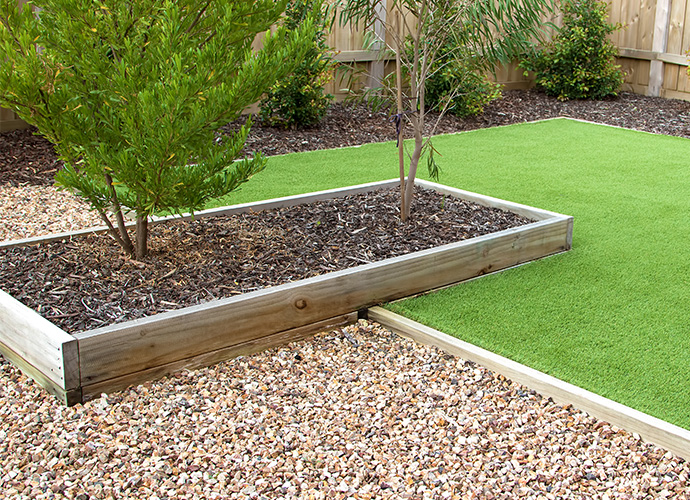Gardens are a focal point for many homes, often serving as an oasis of calm and beauty amidst the hustle and bustle of urban life. While traditional grass lawns have long been the norm, there’s been a surge in public interest for an alternative: artificial grass. So, why is this synthetic option garnering such attention? In this article, we delve deep into the benefits of artificial grass, explore its various types, and consider its potential downsides.

Low Maintenance
One of the foremost advantages of artificial grass is its low maintenance requirements. Forget about mowing, watering, or fertilising; your lawn remains green and pristine throughout the year. This not only saves time but also reduces your water bills and the environmental impacts of regular maintenance.
Durability and Longevity
Artificial grass can stand up to heavy use without becoming patchy or worn out. It’s a resilient option, especially for households with pets or children who love to play outside. With proper care, many synthetic lawns can last up to 20 years.
Aesthetically Pleasing All Year Round
With artificial turf, gone are the days of winter browning or summer parching. Your lawn remains vibrantly green and inviting throughout the seasons.
Environmentally Friendly Options
While it may seem counterintuitive, some artificial lawns offer eco-friendly benefits. They reduce the need for water, pesticides, and fertilisers, all of which can harm the environment.
Flexibility in Design
Artificial grass comes in various textures, lengths, and shades, allowing homeowners to customise their lawns based on their preferences. Whether you’re after a manicured lawn look or a wilder aesthetic, there’s a synthetic turf for you.
No Mud, No Mess
Rainy days and natural lawns often result in muddy footprints inside homes. With artificial turf, this is no longer a concern, making it especially beneficial during the UK’s wetter months.
Downsides to Consider
Like all things, artificial grass isn’t without its drawbacks.
Initial Cost
The initial outlay for a quality synthetic lawn can be significant. However, many homeowners find that the reduction in maintenance costs and the longevity of the product balances out this initial expense.
Heat Absorption
During extremely hot days, artificial grass can become much warmer than its natural counterpart. Some homeowners combat this by sprinkling their lawns with water to cool it down.
Environmental Concerns
While there are eco-friendly benefits as mentioned earlier, there are also concerns. For instance, artificial turf is not biodegradable, meaning that at the end of its life, it can contribute to landfill waste.
Which Type is Right for You?
Given the myriad of artificial grass options available, it’s crucial to choose one that suits your needs and aesthetics. Factors to consider include the grass’s density, pile height, shade, and texture. Consulting with a reputable supplier can help you navigate these choices and find the perfect fit for your garden.
Boosting Property Appeal
It’s worth noting that a well-maintained garden – whether natural or artificial – can enhance a property’s appeal. For prospective buyers or tenants, the idea of a hassle-free lawn can be an attractive proposition. As such, properties featuring artificial grass might just have that extra edge in a competitive market.
Ensuring Quality Installation
Opting for artificial grass is just the beginning. Proper installation is paramount to ensure that the turf lies flat, drains well, and remains secure for years. Choosing a reputable installer with experience and positive reviews can make all the difference in the final appearance and longevity of your lawn.
Artificial grass, with its slew of benefits, is fast becoming a popular choice for UK homeowners. It offers a blend of aesthetic appeal, durability, and practicality that few other garden solutions can match.
However, as with all investments, it’s essential to approach this choice with a well-informed perspective. Understand the pros and cons, seek out quality suppliers and installers, and remember to weigh the environmental implications.
Regardless of the route you choose, be it natural or artificial, the ultimate goal remains the same: a beautiful, functional space that brings joy and adds value to your property.






